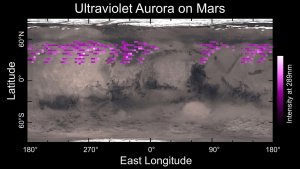| News / Space News |
The Most Luminous Galaxy in Universe
NASA | MAY 23, 2015
A remote galaxy shining with the light of more than 300 trillion suns has been discovered using data from NASA's Wide-field Infrared Survey Explorer (WISE). The galaxy is the most luminous galaxy found to date and belongs to a new class of objects recently discovered by WISE -- extremely luminous infrared galaxies, or ELIRGs.

This artist's concept depicts the current record holder for the most luminous galaxy in the universe. ![]()
The brilliant galaxy, known as WISE J224607.57-052635.0, may have a behemoth black hole at its belly, gorging itself on gas. Supermassive black holes draw gas and matter into a disk around them, heating the disk to roaring temperatures of millions of degrees and blasting out high-energy, visible, ultraviolet and X-ray light. The light is blocked by surrounding cocoons of dust. As the dust heats up, it radiates infrared light.
Immense black holes are common at the cores of galaxies, but finding one this big so "far back" in the cosmos is rare. Because light from the galaxy hosting the black hole has traveled 12.5 billion years to reach us, astronomers are seeing the object as it was in the distant past. The black hole was already billions of times the mass of our sun when our universe was only a tenth of its present age of 13.8 billion years.
YOU MAY ALSO LIKE





